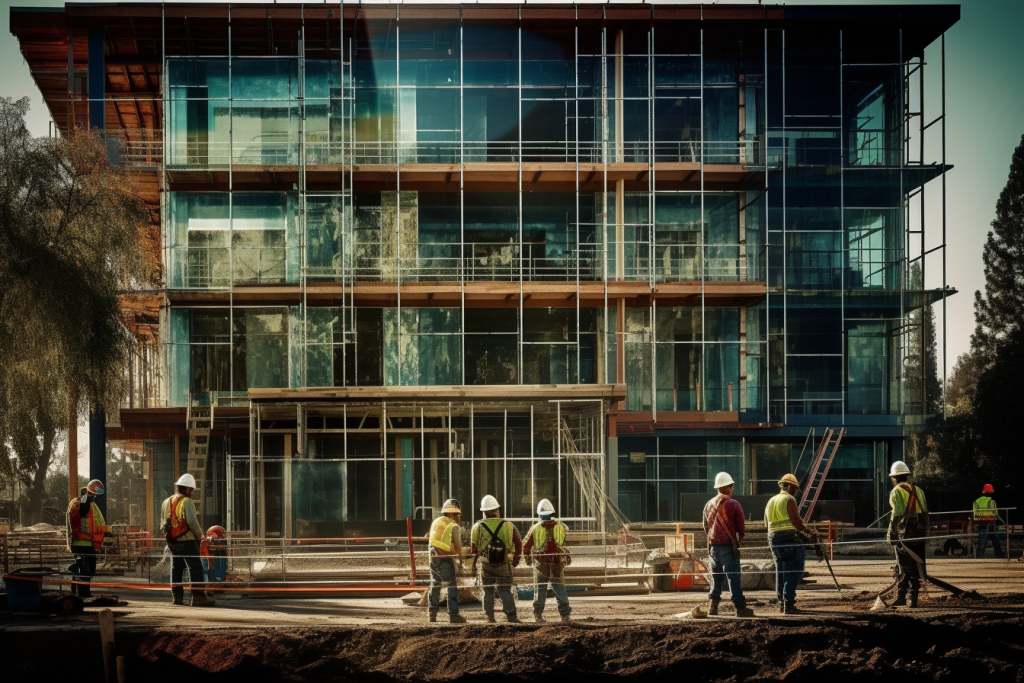Best Practices for Documenting Tool Box Talks on a Construction Site
Table of Contents:
In the dynamic and ever-evolving world of construction, effective communication is essential to ensure the safety and productivity of workers. One crucial communication tool used in the industry is the tool box talk—a short, focused safety meeting that addresses specific hazards, procedures, or best practices related to a particular task or job site. These talks are a valuable opportunity to share important information, reinforce safety protocols, and foster a culture of awareness and collaboration among the construction team.
While conducting tool box talks is crucial, documenting them is equally important. Proper documentation serves as a record of the topics covered, the attendees, and the key points discussed. It ensures consistency, accountability, and allows for future reference. In this article, we will explore the best practices for documenting tool box talks in construction, helping you maximize their effectiveness and ensure compliance with safety regulations.

Determine the Format:
The first step in documenting tool box talks is to determine the format that works best for your construction project. There are various options available, including digital forms, paper-based templates, or even dedicated software specifically designed for documenting tool box talks. Choose a format that aligns with your project’s needs, resources, and communication methods.
Identify Key Information to Capture:
When documenting tool box talks, it is essential to capture key information accurately. This typically includes the date, time, location, topic, and presenter of the talk. Additionally, documenting the names of attendees is crucial for ensuring that all team members receive the necessary information and participate in the discussions. Some projects may require additional information such as the trade or role of the attendees, ensuring that the talk is relevant to their specific tasks.
Prepare an Outline or Template:
To ensure consistency and efficiency in documenting tool box talks, it can be helpful to prepare an outline or template in advance. This outline should include the essential elements to capture during each talk, such as the main points discussed, any questions or concerns raised, and the action items or recommendations provided. Having a standardized outline or template streamlines the documentation process and makes it easier to review and reference the information later.
Assign a Documenter:
To ensure accurate and thorough documentation, it is essential to assign a designated documenter for each tool box talk. This person should be responsible for taking detailed notes during the talk, capturing key points, and documenting any follow-up actions or decisions. The documenter should also ensure that the documentation is complete, legible, and accessible to the project team.
Mark S. | Senior Superintendent
“It’s helpful, especially with these tighter spaces. It makes the trade partners plan better.”
Use Clear and Concise Language:
When documenting tool box talks, it is important to use clear and concise language that effectively communicates the key information discussed. Avoid technical jargon or overly complex terminology that may confuse readers. Use plain language that is easily understood by all team members, regardless of their level of experience or expertise. Clear and concise documentation enhances comprehension and allows for effective communication across the construction team.
Include Visual Aids or Examples:
To enhance the effectiveness of the documented tool box talks, consider including visual aids or examples whenever appropriate. Visual elements such as diagrams, charts, or photographs can help illustrate key points, hazards, or safety procedures. By incorporating visual aids, you make the documentation more engaging and memorable, reinforcing the importance of the discussed topics.
Ensure Accessibility and Distribution:
Documented tool box talks should be easily accessible to all team members who attended the talk and those who may have missed it. Utilize digital platforms, shared drives, or project management software to ensure that the documentation is readily available. Additionally, consider distributing copies or summaries of the documented talks to team members who may not have been present but need the information for their tasks or responsibilities.
Establish a Documentation Review Process:
To maintain the quality and accuracy of documented tool box talks, it is beneficial to establish a review process. Assign someone with knowledge and authority, such as a safety manager or project supervisor, to review the documentation regularly. This review ensures that the documentation aligns with safety protocols, regulatory requirements, and project-specific guidelines. Any necessary corrections or revisions can be made during this process to maintain the integrity of the documentation.
Document Follow-Up Actions:
Tool box talks often involve discussing actions or recommendations to address identified hazards or improve safety practices. It is crucial to document these follow-up actions and monitor their progress. Assign responsibility for each action item, establish timelines, and track their completion. Documenting follow-up actions demonstrates accountability and ensures that the necessary steps are taken to address safety concerns or implement improvements.
David S. | Senior Project Manager | Truebeck Construction
“Before StruxHub, we were using a binder with sign-in/sign-out times for a $500M project with 350 guys on the jobsite. After StruxHub, we were able to limit our delivery spaces to the existing loading docks of the two buildings and get people in and out more efficiently. We’ve seen StruxHub take off immensely. People are planning better, subcontractors appreciate it more, and it really limits how much time is needed in the office to manage the delivery process. StruxHub has helped us tremendously.”
Maintain Documentation for Future Reference:
Effective documentation is not only about capturing information in the present but also about creating a valuable resource for future reference. Maintain a well-organized archive of documented tool box talks for easy retrieval and review. This documentation can serve as a reference for new team members, support incident investigations, inform safety audits, and contribute to continuous improvement efforts in the construction project.
Documenting tool box talks is a critical aspect of construction safety management.
By following these best practices, you can ensure that the information shared during these talks is accurately captured, effectively communicated, and readily accessible to the construction team. By determining the appropriate format, identifying key information, preparing an outline or template, and assigning a dedicated documenter, you establish a structured approach to documenting tool box talks. Using clear and concise language, incorporating visual aids or examples, and ensuring accessibility and distribution of the documentation further enhance its effectiveness.
Additionally, establishing a review process, documenting follow-up actions, and maintaining a well-organized archive of documented tool box talks contribute to the long-term benefits of this practice. The documentation serves as a valuable resource for future reference, supporting training efforts, incident investigations, safety audits, and continuous improvement initiatives.
Documenting tool box talks not only demonstrates a commitment to safety but also ensures compliance with safety regulations and helps foster a culture of awareness and collaboration within the construction team.
The documentation acts as a tangible record of the safety discussions and serves as a reminder of the shared responsibility to maintain a safe work environment.
Moreover, documented tool box talks provide a means for accountability and transparency. They serve as evidence that safety topics were addressed, and actions were taken to mitigate risks and promote a safer working environment. In the event of incidents or regulatory inspections, having comprehensive documentation can demonstrate the proactive measures taken by the construction team to prioritize safety.
It is crucial to remember that documentation alone is not sufficient. The documented tool box talks should be part of a broader safety management system that includes regular training, hazard assessments, and ongoing communication. The documentation should complement other safety initiatives and contribute to the overall safety culture within the construction project.
By implementing these best practices for documenting tool box talks, you can enhance safety communication, ensure compliance, and promote a safer work environment. The documented information becomes a valuable resource that supports effective decision-making, fosters collaboration, and helps prevent incidents on the construction site.
StruxHub is a construction project management software that helps you manage projects from start to finish. It offers features like task management, document management, and communication tools. StruxHub can help you save time and money, improve communication, collaboration, and decision-making.
To learn more about how StruxHub can streamline your construction management processes, request a demo today. By completing our form, you’ll hear from our team soon to discuss how StruxHub can help you:
- Schedule construction material deliveries with your trades
- Coordinate construction site resources and on-site logistics
- Digitize work permits and inspection forms
- Communicate and track P6 and Excel schedules
- Broadcast announcements to all construction workers
Don’t miss out on the opportunity to optimize your construction management processes with StruxHub. Sign up for a free demo today.

StruxHub
Experience the power of StruxHub today and witness firsthand how it can revolutionize your construction operations.


